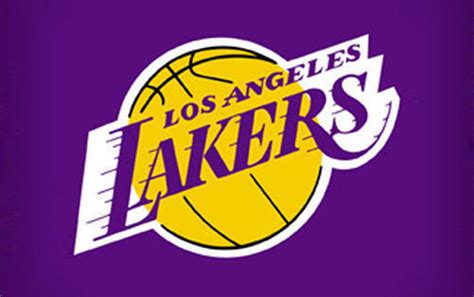
Reali Lays Bare Reasons Behind ‘Around the Horn’s’ ESPN Departure
Tony Reali, the longtime host of ESPN’s “Around the Horn,” has shed light on the factors that led to the show’s eventual cancellation after a successful two-decade run. In a candid interview, Reali discussed the evolving media landscape, the challenges of maintaining relevance in a rapidly changing sports television environment, and the specific internal dynamics at ESPN that contributed to the decision to sunset the iconic program. While the show enjoyed considerable longevity and dedicated viewership, Reali emphasized that the confluence of several key factors made its ending inevitable.
Reali’s insights provide a glimpse into the inner workings of a major sports media network and the difficult choices involved in programming strategy and resource allocation. The cancellation marks the end of an era for many sports fans who grew up watching the show’s unique blend of debate, wit, and insightful commentary. Understanding the reasons behind this decision offers a broader perspective on the pressures facing traditional media outlets in the digital age.
In a recent video appearance, Reali explained, “There were a lot of reasons. The media landscape changes. Everything kind of evolves, and ‘Around the Horn’ had a great run.” This seemingly simple statement belies a complex set of circumstances, which Reali elaborated upon throughout the discussion.
The shift in audience consumption habits, specifically the move towards streaming and on-demand content, played a pivotal role. “People aren’t necessarily watching at 5 o’clock anymore,” Reali acknowledged. “They’re watching on their phones, they’re watching snippets, they’re watching later. And the way we measure success has changed.” This reflects a broader trend impacting linear television programming across all genres, not just sports. Networks are struggling to maintain viewership in traditional time slots as viewers increasingly turn to alternative platforms and viewing patterns.
Further compounding the issue was the increasing competition from alternative forms of sports media. The rise of podcasts, social media, and independent sports blogs has provided fans with a plethora of options for consuming sports news and analysis. This fragmented the audience and diluted the impact of traditional television programs like “Around the Horn.” Reali recognized that the show had to constantly adapt to remain relevant in this crowded marketplace, but ultimately, the challenges proved too significant.
Beyond the external factors, Reali also alluded to internal considerations within ESPN. While he refrained from providing specific details, he hinted at changes in management and programming priorities that influenced the decision. “ESPN is constantly evolving,” Reali stated. “They have to make tough choices about where to allocate resources and what kind of content to prioritize.” He acknowledged that “Around the Horn” may no longer have aligned with the network’s long-term strategic vision.
One critical aspect of the show’s format was its reliance on a diverse panel of commentators located remotely across the country. This innovative approach, while initially groundbreaking, became increasingly expensive and logistically challenging to maintain. Coordinating schedules, managing technical infrastructure, and ensuring consistent quality across multiple locations required significant resources. As ESPN sought to streamline its operations and reduce costs, the show’s production model may have become unsustainable.
Moreover, the show’s format, while beloved by many, may have struggled to attract new viewers in a constantly evolving media landscape. The quick-fire debates and rapid-fire commentary, while engaging for loyal fans, may not have resonated with younger audiences accustomed to different styles of content. ESPN may have concluded that investing in newer, more innovative programming would be more effective in reaching this demographic.
Reali also addressed the emotional aspect of the show’s cancellation, acknowledging the impact on the commentators, producers, and loyal viewers. “It was a family,” he said. “We spent years together, arguing, debating, and creating something unique. It’s tough to see that come to an end.” He expressed gratitude for the opportunity to host the show and praised the dedication and talent of everyone involved.
The departure of prominent figures from the show over the years also likely played a role. While “Around the Horn” had a strong core of regular commentators, the loss of key personalities could have affected its overall appeal and dynamic. Replacing these individuals and maintaining the show’s signature chemistry proved to be a continuous challenge.
The financial pressures facing ESPN also contributed to the decision. As the cost of sports rights continues to escalate, the network has been forced to make difficult choices about which programs to prioritize and which to cut. “Around the Horn,” while relatively inexpensive to produce compared to live sports broadcasts, may have been deemed expendable in the context of broader cost-cutting measures.
Another factor to consider is the potential for brand fatigue. After two decades on the air, “Around the Horn” may have simply run its course. While the show maintained a loyal following, it may have struggled to generate the same level of buzz and excitement as it did in its early years. ESPN may have concluded that it was time to introduce new programming and refresh its lineup.
The increasing polarization of political discourse may have also indirectly affected the show’s appeal. While “Around the Horn” primarily focused on sports, the heated debates and confrontational style of argumentation may have become less appealing to some viewers in an increasingly divided society. The show’s format, which often encouraged strong opinions and passionate disagreements, may have inadvertently contributed to a sense of fatigue among viewers already bombarded with political divisiveness.
In addition, the changing dynamics of the sports world itself may have impacted the show’s relevance. The rise of social media and player empowerment has given athletes a direct voice and platform to express their opinions and engage with fans. This has diminished the role of traditional media outlets as intermediaries and challenged the authority of commentators and analysts.
Reali’s tenure as host, while widely praised, also presented its own set of challenges. Maintaining the show’s energy and momentum over two decades required constant effort and adaptation. As the sports landscape evolved and new personalities emerged, Reali had to continuously reinvent himself and the show to remain relevant.
The increasing emphasis on data and analytics in sports may have also influenced the decision to cancel “Around the Horn.” While the show often incorporated statistical analysis into its discussions, its primary focus was on subjective opinions and debates. ESPN may have concluded that viewers were increasingly interested in data-driven insights and analysis rather than purely opinion-based commentary.
Furthermore, the rise of alternative sports networks and digital platforms has provided commentators with more opportunities to pursue their own projects and build their personal brands. This has made it more difficult for ESPN to retain talent and maintain a consistent roster of commentators for shows like “Around the Horn.”
Ultimately, the cancellation of “Around the Horn” represents a complex confluence of factors, both internal and external. The changing media landscape, the increasing competition, the internal dynamics at ESPN, and the evolving nature of the sports world all contributed to the decision. While the show’s departure marks the end of an era, it also underscores the challenges and opportunities facing traditional media outlets in the digital age.
Reali concluded by expressing his gratitude for the show’s long run and the support of its viewers. He acknowledged the impact that “Around the Horn” had on sports television and the legacy it leaves behind. While the show may be gone, its influence on the sports media landscape will continue to be felt for years to come. The “Around the Horn” model of fast-paced debate and witty commentary has influenced a generation of sports commentators and analysts. The show pioneered a format that has been replicated and adapted by numerous other sports media outlets. It offered a platform for diverse voices and perspectives and fostered a culture of intellectual curiosity and passionate debate. Its end signals a significant shift in sports media consumption and priorities, emphasizing a need for adaptation and innovation in the face of an ever-changing environment.
The final episode of “Around the Horn” marks the end of a beloved program, but it also serves as a reminder of the challenges and opportunities facing the sports media industry in the digital age. As viewers increasingly turn to alternative platforms and viewing patterns, traditional media outlets must adapt and innovate to remain relevant and competitive. The cancellation of “Around the Horn” is a stark reminder that even the most successful and long-running programs are not immune to the forces of change. It is a call for the sports media industry to embrace innovation, adapt to changing consumer habits, and continue to deliver compelling and engaging content that resonates with audiences in the digital age.









